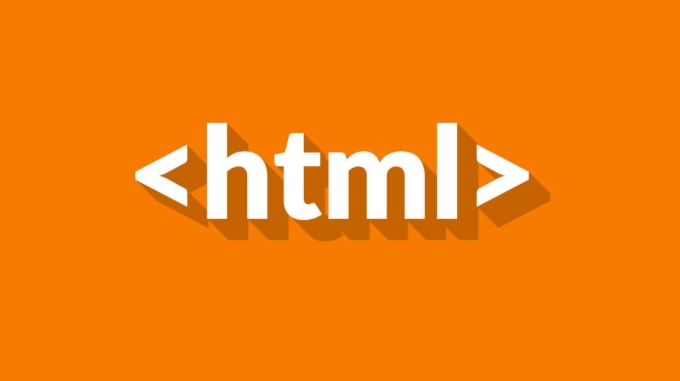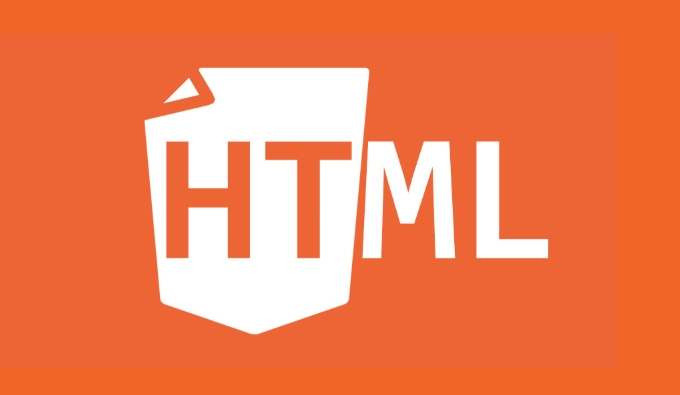Building Responsive Web Layouts with HTML
Jul 18, 2025 am 02:19 AMThe core of responsive web layout is to combine HTML and CSS to adapt the website to different devices. 1. Add viewport meta tags to ensure that the mobile device renders the page correctly; 2. Use Flexbox or Grid to create flexible layouts to automatically adjust elements; 3. Use media queries to set breakpoints and apply specific styles according to different devices; 4. Set pictures and containers to responsiveness to prevent content overflow; 5. Follow the mobile priority principle to improve development efficiency. After mastering these key points, responsive layout will be simpler and more efficient.

The core of responsive web layout is to enable the website to display well on different devices. HTML is the basis for building this layout, but HTML alone is not enough. It is necessary to combine CSS to achieve truly responsive effects. Here are some key points and practical suggestions to help you build responsive web pages in HTML and CSS.

Use viewport meta tag
This is the first step in responsive design and the easiest to overlook. Add the following code to the tag of HTML:
<meta name="viewport" content="width=device-width, initial-scale=1">
This line of code tells the mobile device not to zoom in on the page, but to display the content based on the width of the device. If you don't add this tag, the mobile browser will render the page with desktop width, resulting in the text and pictures that look very small.

Adopt a flexible layout structure
Responsive layouts are usually implemented using CSS's Flexbox or Grid. They allow elements to automatically adjust position and size under different screen sizes.
For example, use Flexbox to create a responsive navigation bar:

<nav class="navbar"> <div>Homepage</div> <div>About</div> <div>Contact</div> </nav>
Cooperate with CSS:
.navbar {
display: flex;
flex-wrap: wrap;
justify-content: space-between;
}This way, menu items will automatically wrap or align on small screens without squeezing together or overflowing the screen.
Use Media Queries to control styles
Media queries are the key tool for realizing responsiveness. It can apply different CSS styles according to the characteristics of the device (such as width, height, direction, etc.).
For example, set a separate style for your phone screen:
@media (max-width: 600px) {
.navbar {
flex-direction: column;
}
}In this way, when the screen width is less than 600px, the navigation bar will become vertically arranged, which is more suitable for mobile phone operation.
suggestion:
- Remember common breakpoints, such as 768px (tablet), 1024px (desktop)
- Don't write too many breakpoints, keep it simple
- Mobile priority principle: first write styles for small screens, and then gradually enhance the experience of large screens
Images and containers should also be responsive
If the image is not processed, it may overflow on the small screen. You can set the maximum width of images to 100% through CSS to make them automatically scale:
img {
max-width: 100%;
height: auto;
}At the same time, containers (such as div, section) should also use percentages or viewport units (vw/vh) to set width instead of fixed pixel values.
Basically that's it. Responsive layouts look complicated, but in fact many details are fixed routines. As long as you master the basic coordination methods of HTML and CSS, it is not difficult to do.
The above is the detailed content of Building Responsive Web Layouts with HTML. For more information, please follow other related articles on the PHP Chinese website!

Hot AI Tools

Undress AI Tool
Undress images for free

Undresser.AI Undress
AI-powered app for creating realistic nude photos

AI Clothes Remover
Online AI tool for removing clothes from photos.

Clothoff.io
AI clothes remover

Video Face Swap
Swap faces in any video effortlessly with our completely free AI face swap tool!

Hot Article

Hot Tools

Notepad++7.3.1
Easy-to-use and free code editor

SublimeText3 Chinese version
Chinese version, very easy to use

Zend Studio 13.0.1
Powerful PHP integrated development environment

Dreamweaver CS6
Visual web development tools

SublimeText3 Mac version
God-level code editing software (SublimeText3)
 The `` vs. `` in HTML
Jul 19, 2025 am 12:41 AM
The `` vs. `` in HTML
Jul 19, 2025 am 12:41 AM
It is a block-level element, used to divide large block content areas; it is an inline element, suitable for wrapping small segments of text or content fragments. The specific differences are as follows: 1. Exclusively occupy a row, width and height, inner and outer margins can be set, which are often used in layout structures such as headers, sidebars, etc.; 2. Do not wrap lines, only occupy the content width, and are used for local style control such as discoloration, bolding, etc.; 3. In terms of usage scenarios, it is suitable for the layout and structure organization of the overall area, and is used for small-scale style adjustments that do not affect the overall layout; 4. When nesting, it can contain any elements, and block-level elements should not be nested inside.
 Specifying Character Encoding for HTML Documents (UTF-8)
Jul 15, 2025 am 01:43 AM
Specifying Character Encoding for HTML Documents (UTF-8)
Jul 15, 2025 am 01:43 AM
To correctly set the character encoding of the HTML document to UTF-8, you need to follow three steps: 1. Add at the top of the HTML5 part; 2. Configure the response header Content-Type: text/html; charset=UTF-8, if Apache uses AddDefaultCharsetUTF-8, Nginx uses charsetutf-8; 3. Select the UTF-8 encoding format when saving HTML files in the editor. These three links are indispensable, otherwise it may lead to garbled page code and failure of special character parsing, affecting user experience and SEO effect. It is important to ensure that HTML declaration, server configuration and file saving are consistent.
 Essential HTML Tags for Beginners
Jul 27, 2025 am 03:45 AM
Essential HTML Tags for Beginners
Jul 27, 2025 am 03:45 AM
To get started with HTML quickly, you only need to master a few basic tags to build a web skeleton. 1. The page structure is essential, and, which is the root element, contains meta information, and is the content display area. 2. Use the title. The higher the level, the smaller the number. Use tags to segment the text to avoid skipping the level. 3. The link uses tags and matches the href attributes, and the image uses tags and contains src and alt attributes. 4. The list is divided into unordered lists and ordered lists. Each entry is represented and must be nested in the list. 5. Beginners don’t have to force memorize all tags. It is more efficient to write and check them while you are writing. Master the structure, text, links, pictures and lists to create basic web pages.
 Shadow DOM Concepts and HTML Integration
Jul 24, 2025 am 01:39 AM
Shadow DOM Concepts and HTML Integration
Jul 24, 2025 am 01:39 AM
ShadowDOM is a technology used in web component technology to create isolated DOM subtrees. 1. It allows the mount of an independent DOM structure on ordinary HTML elements, with its own styles and behaviors, and does not affect the main document; 2. Created through JavaScript, such as using the attachShadow method and setting the mode to open; 3. When used in combination with HTML, it has three major features: clear structure, style isolation and content projection (slot); 4. Notes include complex debugging, style scope control, performance overhead and framework compatibility issues. In short, ShadowDOM provides native encapsulation capabilities for building reusable and non-polluting UI components.
 Why is my image not showing up in HTML?
Jul 28, 2025 am 02:08 AM
Why is my image not showing up in HTML?
Jul 28, 2025 am 02:08 AM
Image not displayed is usually caused by a wrong file path, incorrect file name or extension, HTML syntax issues, or browser cache. 1. Make sure that the src path is consistent with the actual location of the file and use the correct relative path; 2. Check whether the file name case and extension match exactly, and verify whether the image can be loaded by directly entering the URL; 3. Check whether the img tag syntax is correct, ensure that there are no redundant characters and the alt attribute value is appropriate; 4. Try to force refresh the page, clear the cache, or use incognito mode to eliminate cache interference. Troubleshooting in this order can solve most HTML image display problems.
 HTML `style` Tag: Inline vs. Internal CSS
Jul 26, 2025 am 07:23 AM
HTML `style` Tag: Inline vs. Internal CSS
Jul 26, 2025 am 07:23 AM
The style placement method needs to be selected according to the scene. 1. Inline is suitable for temporary modification of single elements or dynamic JS control, such as the button color changes with operation; 2. Internal CSS is suitable for projects with few pages and simple structure, which is convenient for centralized management of styles, such as basic style settings of login pages; 3. Priority is given to reuse, maintenance and performance, and it is better to split external link CSS files for large projects.
 Can you put a tag inside another tag?
Jul 27, 2025 am 04:15 AM
Can you put a tag inside another tag?
Jul 27, 2025 am 04:15 AM
?Youcannotnesttagsinsideanothertagbecauseit’sinvalidHTML;browsersautomaticallyclosethefirstbeforeopeningthenext,resultinginseparateparagraphs.?Instead,useinlineelementslike,,orforstylingwithinaparagraph,orblockcontainerslikeortogroupmultipleparagraph
 What is the Resize Observer API?
Jul 15, 2025 am 02:53 AM
What is the Resize Observer API?
Jul 15, 2025 am 02:53 AM
ResizeObserverAPI is used to monitor DOM element size changes, providing more efficient and accurate feedback. Compared with old methods such as window.resize event or polling detection, it directly observes specific elements and is suitable for responsive layout, chart redrawing, lazy loading and other scenarios. The basic usage includes creating an instance and passing in a callback function, specifying the target element through the observe() method, and supporting multiple element observation and cleaning operations. Note when using it: it is not triggered immediately during initialization, the browser may throttle the call frequency, avoid heavy tasks in callbacks, and some old environments need to introduce polyfills, and ensure that the actual usage scenarios are tested.






